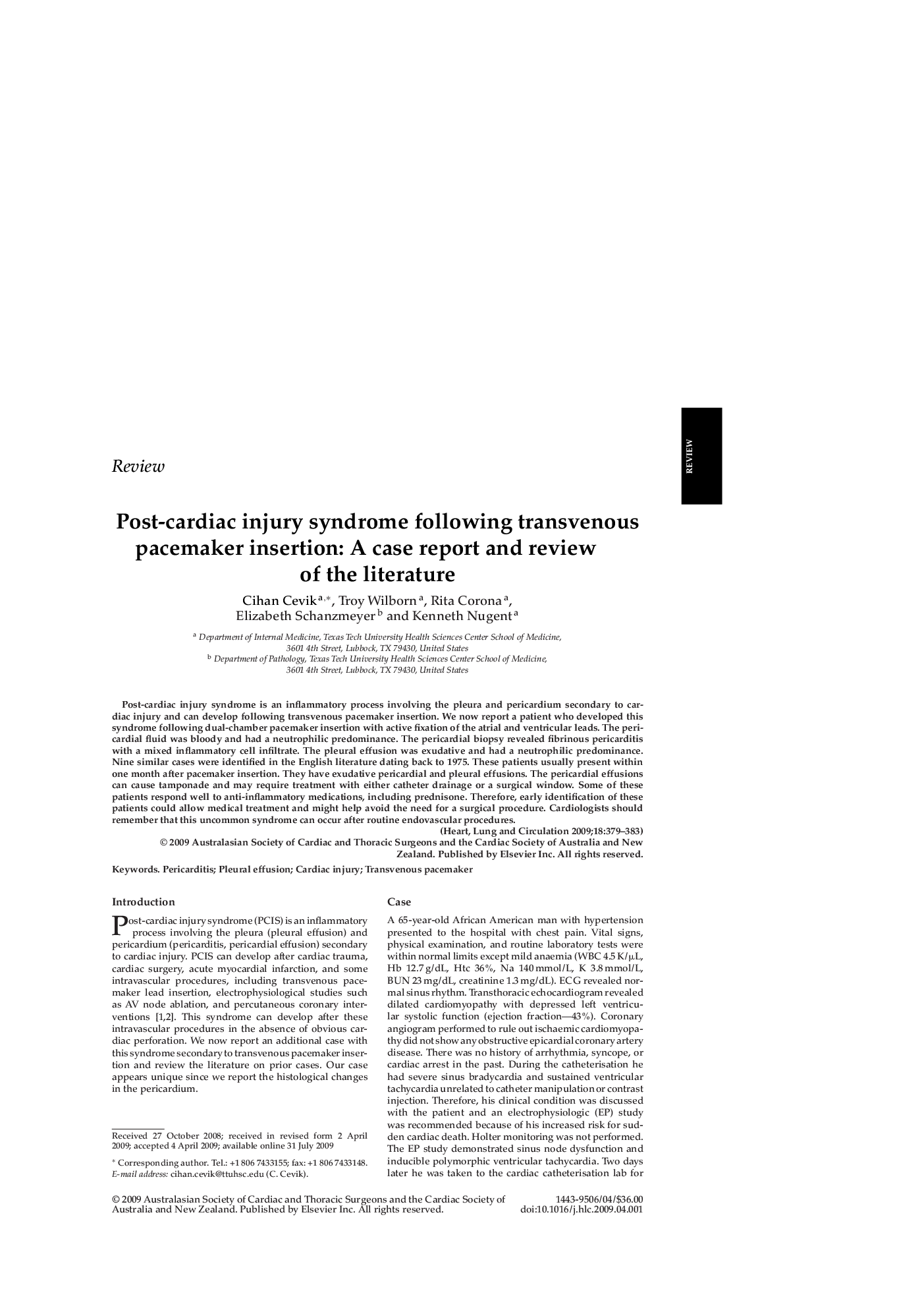| کد مقاله | کد نشریه | سال انتشار | مقاله انگلیسی | نسخه تمام متن |
|---|---|---|---|---|
| 2919497 | 1175714 | 2009 | 5 صفحه PDF | دانلود رایگان |

Post-cardiac injury syndrome is an inflammatory process involving the pleura and pericardium secondary to cardiac injury and can develop following transvenous pacemaker insertion. We now report a patient who developed this syndrome following dual-chamber pacemaker insertion with active fixation of the atrial and ventricular leads. The pericardial fluid was bloody and had a neutrophilic predominance. The pericardial biopsy revealed fibrinous pericarditis with a mixed inflammatory cell infiltrate. The pleural effusion was exudative and had a neutrophilic predominance. Nine similar cases were identified in the English literature dating back to 1975. These patients usually present within one month after pacemaker insertion. They have exudative pericardial and pleural effusions. The pericardial effusions can cause tamponade and may require treatment with either catheter drainage or a surgical window. Some of these patients respond well to anti-inflammatory medications, including prednisone. Therefore, early identification of these patients could allow medical treatment and might help avoid the need for a surgical procedure. Cardiologists should remember that this uncommon syndrome can occur after routine endovascular procedures.
Journal: Heart, Lung and Circulation - Volume 18, Issue 6, December 2009, Pages 379–383